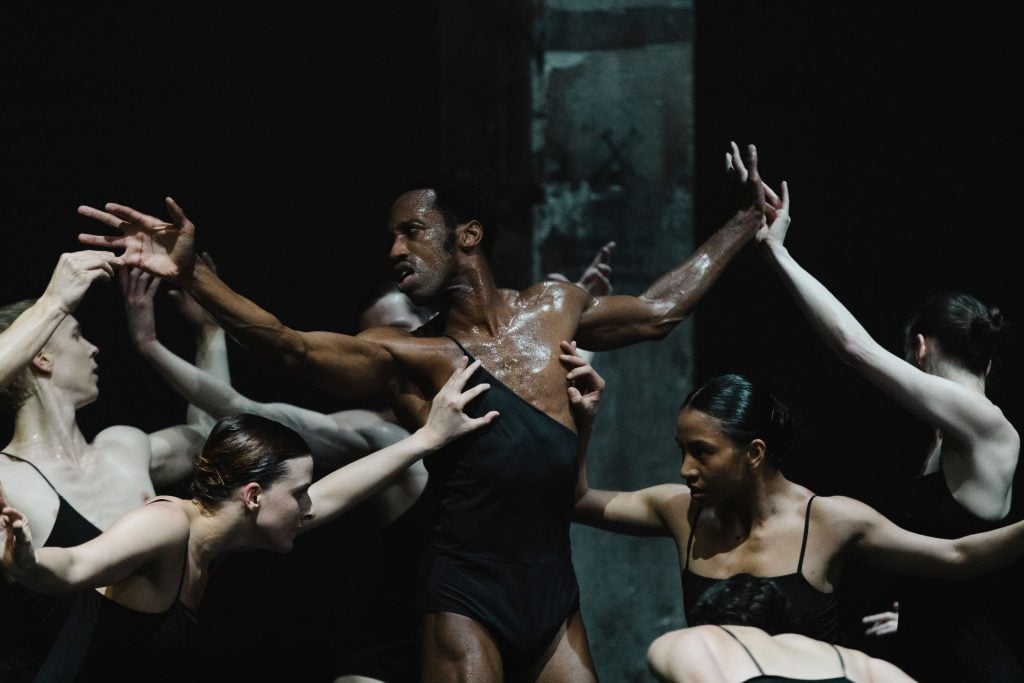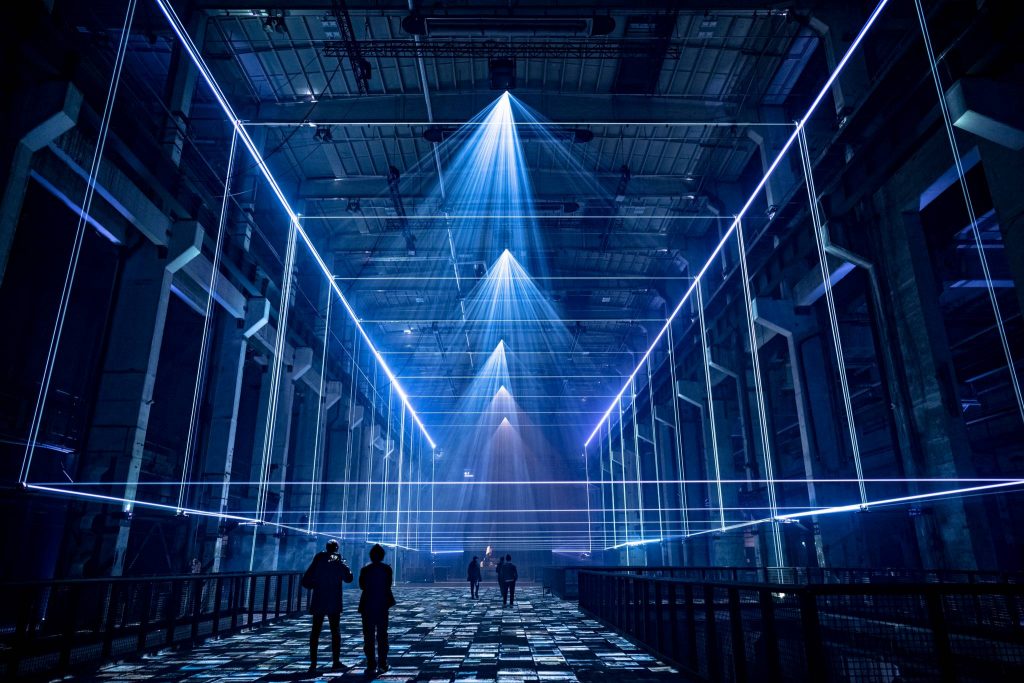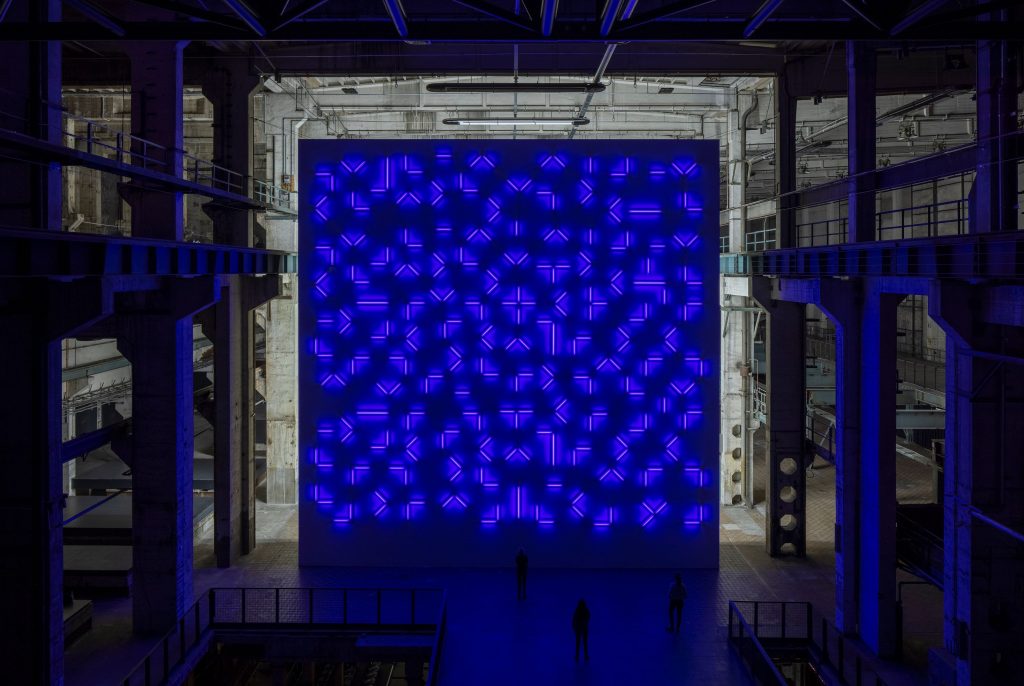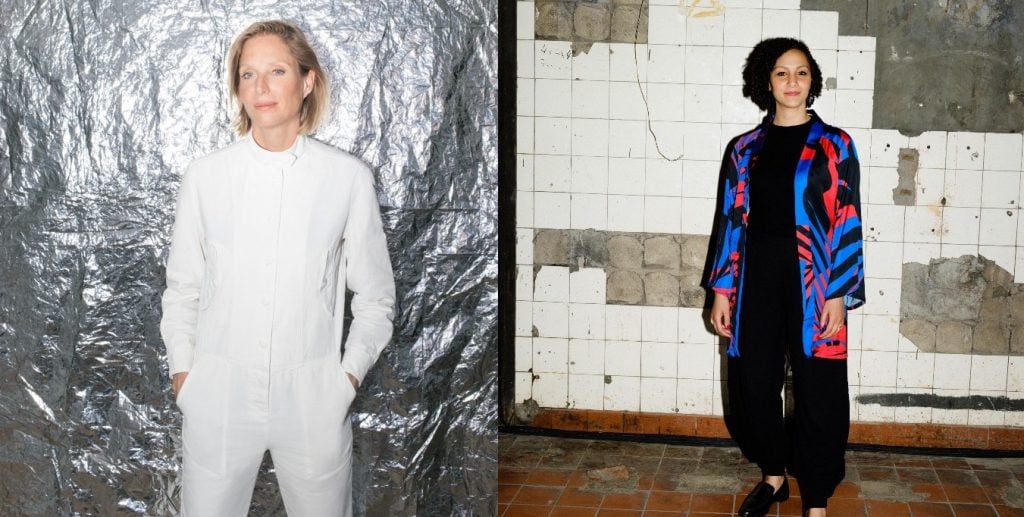Art & Exhibitions
Is It Time to Rethink the Art Exhibition? An Upstart Nonprofit Is Doing Just That With Radical Pop-Up Shows Across Berlin
LAS has been roving across some of Berlin's most iconic venues with ambitious artistic projects.

LAS has been roving across some of Berlin's most iconic venues with ambitious artistic projects.

Kate Brown

On a recent January night, the concrete walls and pillars of Kraftwerk, a large former East German power plant, trembled from deep bass. The arts and culture venue in Berlin is a cold space with multiple levels, towering ceilings, and impenetrably dark corners: from the darkness, dancers emerged onto an intimate stage as the beat pummelled a hushed audience—all set up there by LAS, an emergent nonprofit art foundation.
The dancers, who are led by Israeli choreographer Sharon Eyal and her co-creator Gai Behar, had been rehearsing and performing pieces from their arsenal at Kraftwerk for two months this winter as part of a residency organized by LAS, which culminated January 26–27 with the unveiling of a new commission called Wet. The trio of interlinked dances were presented on two evenings to a packed house, showcasing Eyal’s uniquely talented ballet dancers who have cracked every mold of traditional training while retaining exactitude. Almost always dressed in sleek bathing suits and silky socks, they twist up their bodies and slide into superhuman angles, delivering a choreography that is coordinated but individualistic. You can pick up the shudder of a reference here or there, but otherwise it feels inventive, introducing a radical human element to what we’ve known as ballet—it’s really much unlike anything you have seen before.
Eyal’s troupe and her devoted international following sit on the periphery of the so-called art world, but that is precisely why LAS has incorporated her work into its program. The nomadic nonprofit is a relative newcomer in Berlin’s landscape of private foundations and public institutions. On February 10, the proceedings moved to yet another space, Schering Stiftung in the museum-rich area of Unter den Linden, to open a show created by Libby Heaney with quantum computing.

Ensemble Tanzmainz, Promise (2021) which was performed as a part of Sharon Eyal and Gai Behar’s residency at Kraftwerk. © Andreas Etter.
LAS sits more or less between the various outlets in the German capital, explained Amira Gad, head of program, a versatile curator who joined the Berlin foundation from London’s Serpentine Galleries, where she had organized exhibitions by Arthur Jafa and Jimmie Durham.
“We are trying to create a new model of what it is to go to an art exhibition,” she told me as we sat under the blue light of a soaring installation by Robert Irwin—another commission on view at Kraftwerk, alongside Eyal’s performances. The two creators are of markedly different generations and discourses, but they sit well together. “If we imagine LAS as a kind of organism that is incorporating itself into an echo system of the art world,” Gad went on, “then the raison d’être of LAS is to claim the gray areas that have emerged there.”
LAS, which stands for Light Art Space, has tiptoed onto the Berlin art scene, seeming to take heed with every step while finding fitting venues for projects as they go. The project is backed by a quiet but certain presence of funder and co-director Jan Fischer, who politely declined to be interviewed. Bettina Kames, co-director of LAS who founded the initiative together with Fischer, calls him the “spiritual rector” and the project his brainchild.

“Refik Anadol: Latent Being,” presented in 2019 at Kraftwerk Berlin. © Refik Anadol
“It should always be about the vision and the ideas that LAS pursues and not any one person,” said Kames. Fischer is an art collector and a member of the board of trustees of the Pinakothek der Moderne in Munich, as well as a trustee of the Outset Contemporary Art Fund, who made his wealth in the transport business.
Despite their seemingly limitless ambition, the pandemic added hurdles. After LAS staged their first exhibition in 2019, with the Turkish digital artist Refik Anadol, who presented an art installation created with machine learning to around 40,000 visitors, a subsequent public program that was set to take place around town was called off due to the virus.
Anadol’s show was the only non-pandemic project LAS has had so far. Last fall, the foundation opened a much-buzzed-about immersive show at the famed Berghain nightclub while the dance floors remained closed for 48-hour parties due pandemic measures. For the show, Berl-Berl, Danish artist Jakob Kudsk Steensen considered Berlin’s overlooked ancient history as a swamp, reanimating its flora and fauna. Visitors lounged on beanbag chairs to gaze up at his large-scale video, which used augmented reality to create a futuristic, amorphous swamp based on the deep past.

Robert Irwin, Light and Space (Kraftwerk Berlin), 2021. Commissioned by LAS (Light Art Space). © Photo: Timo Ohler. VG Bild-Kunst, 2021.
Up next is British artist Libby Heaney, whose CV is equally populated by accolades from science as from art. She will present an 360-degree video installation made using quantum computing that explores Hieronymous Bosch’s Garden of Earthly Delights.
Come spring, Ian Cheng will present a new version of his 2021 anime series Life After BOB, a Frankenstein story updated for the A.I. era which was presented at LUMA Arles and the Shed last year. LAS’s commission will see it transformed from an animation into a hybrid analog experience. Gad called it an intentional “Disneyfication,” adding that viewers will be able to alter the piece when they are in the exhibition by entering prompts on a wiki fan page. In fall 2022, in yet another pivot, the London-based artist Alexandra Daisy Ginsberg will open an ambitious “living” artwork, itself an active campaign to bolster local bee populations by helping with pollination.
At first, it seems hard to draw through lines between LAS’s projects, but they usually involve some form of immersion—though it is always an erudite undertaking and far from the rash of “immersive experiences” cropping up around the world. They are united by their ambitious scale, an evident fascination with science and technology, as well as an interdisciplinary approach to art. “We want to create this diversity in our program,” said Gad. “‘Are you crazy enough to do this?’ That is one of the questions we ask.”

Left: Bettina Kames. © Robert Fischer. Right: Amira Gad. © Bastian Thiery.
To this end, switching locations has allowed for an increased sense of surprise and experimentation, but both Gad and Kames admit that they want to settle down somewhere at some point. Judging by the locations they have chosen so far, one might expect they will go for something with grand proportions.
“A picture has become a bit clearer regarding what LAS is really about, what we want to achieve, what makes it unique,” said Kames. “What we really want to be is an art institution about the future. We want to show what is relevant now but—even more so—what is relevant for the years to come.”